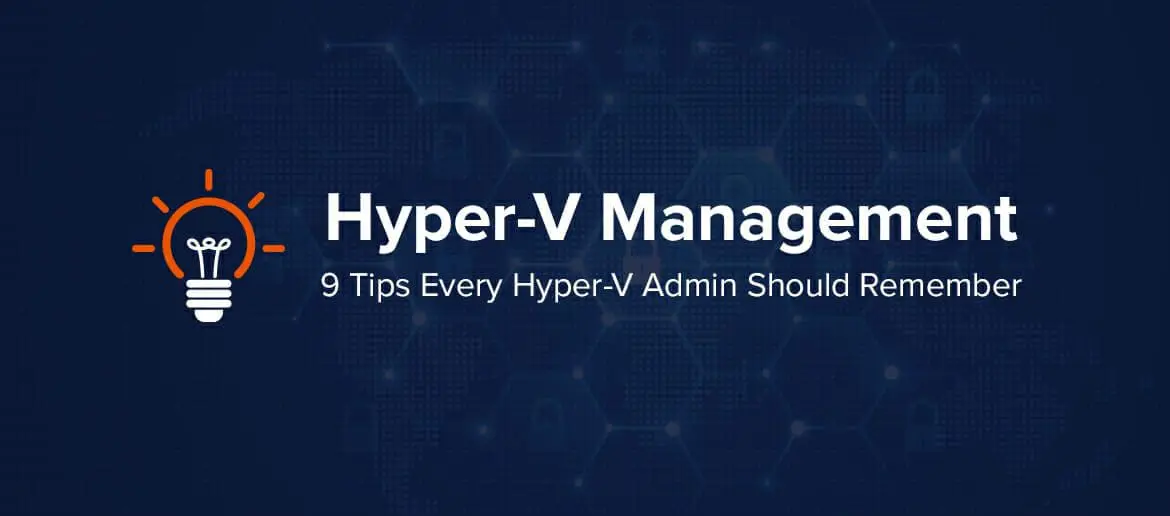Estimated reading time: 5 minutes
 Thank you for reading this post, don't forget to subscribe! Happy New Year 2024!
Thank you for reading this post, don't forget to subscribe! Happy New Year 2024!

Opinions are various and abundant on how to best configure and manage Hyper-V. Much of the advice seems to be confusing, and some if it downright contradictory. One reason for such confusion is that some articles are obviously written under the assumption that VMWare best practices apply equally well to Hyper-V. The other, more common cause of this contradictory information is that best practices for Hyper-V vary considerably, depending on whether you’re managing a Hyper-V cluster.
Much of the Hyper-V advice focuses on how to distribute virtual machines across host servers. If you’re using standalone Hyper-V hosts, it’s relatively easy to arrange your VM placement according to simple guidelines (many of which you can find below). However, in a cluster host environment, each VM is a dynamic resource that is easily relocatable to another host server. There are a number of 3rd-party products that automatically rearrange VMs, as necessary, to ensure that each host performs optimally. Dynamically configurable VMs in such a clustered environment essentially eliminate the need for concern about the best methods for VM placement.
Microsoft’s Hyper-V is a very popular hypervisor, mainly due to its rich feature set and integration with Windows operating systems and utilities. It has proven to be capable enough up against direct competitors. Regrettably, it’s primary management suite, Microsoft System Center, isn’t as popular. But, the good news is, excellent Hyper-V management tools do exist.
Perhaps the main reason that many organizations avoid the Virtual Machine Manager that comes with System Center is, quite simply, the cost. Though Microsoft claims that Hyper-V is “free”, the list price for System Center Standard Edition is over $1,200; the Datacenter Edition is at least $3,300. Setting aside the cost, many will agree that System Center is surely not easy to install, manage or maintain. So, what are some of the best ways to manage your Hyper-V environment?
To help you optimize the management and performance of your Hyper-V installations (What is Hyper-V?), have a look at the tips below.
Tip 1 — Be Aware of Domain Controller Snags
Be careful if you run a Domain Controller (DC) in any Hyper-V VM. Do not use save-state for a virtual DC, since it may result in problems synchronizing with the domain. Use the VM guest Shut Down option if you need to bring down the VM. Also, don’t pause a virtual DC for more than a few minutes to avoid disrupting replication.
Tip 2 — Enable Processor Compatibility
With Live Migration, you can move a VM from one Hyper-V host to another with no user downtime. Remember that the source and destination hosts must have compatible processors—from the same manufacturer category. Otherwise, access the VM settings and enable processor compatibility by clicking the Processor node. Then check the box to Migrate to a physical computer with a different processor version.
Tip 3 — Use PowerShell to Manage Hyper-V
The Virtual Machine Manager (VMM) within System Center provides access to PowerShell. Many organizations don’t use System Center due to the expense involved. You can still use PowerShell to manage your Hyper-V VMs however. Learn how in the Microsoft Virtualization documentation.
Tip 4 — Move VMs with Import and Export
Even Though Live Migration is a good feature, not all shops can support it. Relocating a VM isn’t as easy as it was back in the day with Virtual Server. There is an easy alternative: open the Hyper-V Manager, choose a VM, and then choose the Action > Export option. Similarly, choose Action > Import on the target.
Tip 5 — Boot Your VMs from iSCSI LUNs
If you want to boot any VM from an iSCSI LUNs, first attach the LUNs to the Hyper-V parent partition. Then, create the VM without a hard disk. Once the VM is ready, choose the IDE controller and add a disk. In the Hard Disk configuration pop-up, choose Physical hard disk, and choose iSCSI LUN. This VM will now boot from the iSCSI LUN.
Tip 6 — Connect VMs to iSCSI Storage
The Hyper-V Virtual Machine Wizard makes it easy enough to configure VM access to direct attached storage (DAS). Alternatively, you can connect any VM to storage on a iSCSI SAN. Using the Administrative Tools, choose the iSCSI Initiator option, and then point the iSCSI Initiator to the iSCSI SAN.
Tip 7 — Ensure Sufficient Network Adapters on the Host
When consolidating servers, it’s easy to neglect whether there is an adequate number of physical network adapters in the Hyper-V host. Too many VMs sharing too few network adapters can quickly exceed available bandwidth. Optimally, it’s best to dedicate one adapter to each VM. Otherwise, distribute the network load across as many network adapters as you can afford.
Tip 8 — Enable VSS Compatibility for Windows Server Backup
With the Volume Shadow Copy Service (VSS), you can back up live applications with virtually no downtime. Though Hyper-V is compatible with VSS-aware, it isn’t enabled by default. It’s necessary to create a registry entry. For more details, read How to enable Windows Server Backup support for the Hyper-V VSS Writer.
Tip 9 — Prior to Migration, Uninstall VM Additions
If you’re moving a VM from Virtual Server to Hyper-V, it’s important to uninstall any VM Additions from the VM in the old platform. You won’t be able to uninstall additions from within Hyper-V.
Until next time, Rob….
